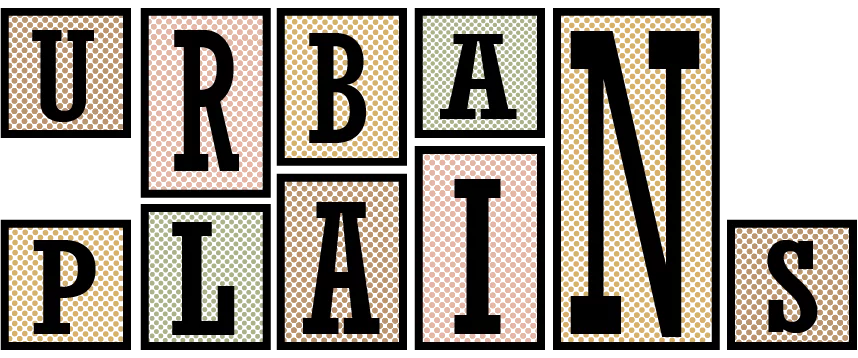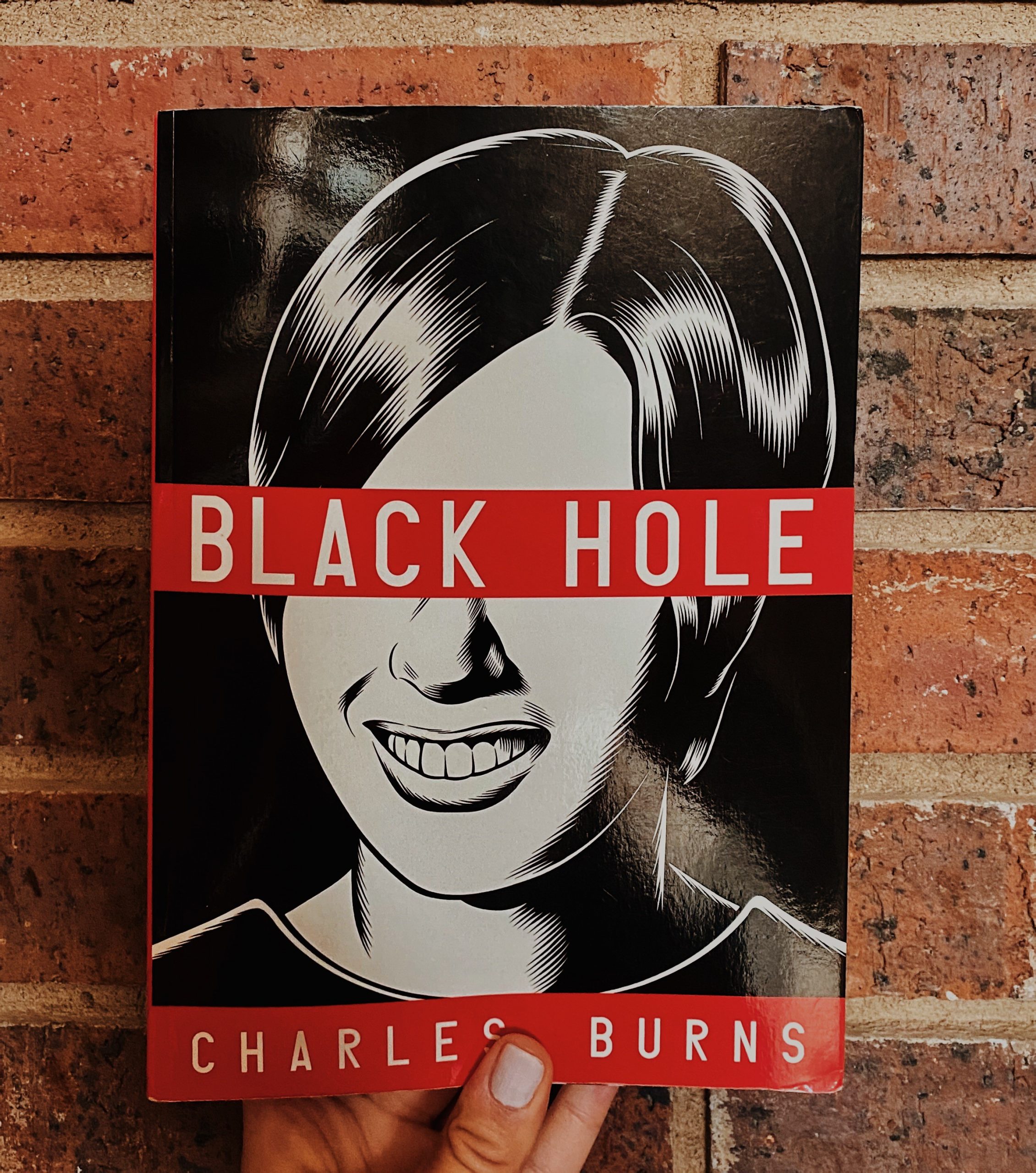For our final installment of “Read the Rainbow,” we’ve chosen some of our favorite books to preview.
Red: Black Hole by Charles Burns
Gyms may be closed, but you can still get your blood pumping with this thriller.
In Charles Burns’ graphic novel Black Hole, readers are brought into an alternate universe in the ‘70s where teenagers contract deformities from having sex, in turn, becoming lepers of society, losing friends, and even witnessing murder. In the story, the marks are hyperbolized, appearing different for everyone. For one girl, she grows a vagina on her back after losing her virginity. Another guy grows a tiny mouth on his neck. They look and feel like monsters, and become ostracized from society, forced to live in the woods.
Even though this plotline is pretty interesting already, the images are what make the story stand out and scare readers. Burns isn’t afraid to dedicate an entire page to a penis. He isn’t afraid to show the more revolting side of high school love affairs. You’ll be uncomfortable reading Black Hole, but you’ll certainly be enthralled to keep turning the black and white pages.
Orange: The Great Gatsby by F. Scott Fitzgerald
Orange you glad you slept on this book in high school? Catch up on your tenth-grade homework and appreciate this classic from the confinement of your home.
In the classic F. Scott Fitzgerald novel The Great Gatsby, narrator Nick Carroway tells the story of how he met the infamous Jay Gatsby and was pulled into his world for a summer. Gatsby pursues Daisy Buchanan with Nick’s help, trying to cut through his murky past with dazzling parties attended by hundreds across West Egg. But this book extends past a shiny exterior painted by Gatsby’s charismatic nature and famous jazz-era parties—it also explores his persistence to reach for the green light across the Sound in the same way that he remains locked on receiving Daisy’s love. Nick’s life becomes quickly intertwined with Gatsby, Jordan Baker, and the Buchanans, showing how seemingly small actions of a few can build up and change everything in a matter of months.
Yellow: The Invention of Nature by Andrea Wulf
Haven’t seen the sun since pre-COVID 19? Get out and go Around the World with this book.
You’ve probably never heard of him, but you’ve definitely felt his impact. In this biography, Alexander Von Humboldt, an Austrian born noble, uses his riches to travel and study the world while transforming the way we think about nature. His exploration of South America led to our modern thinking of ecosystems. His books inspired Charles Darwin and Henry David Thoreau, and his illustrations helped a whole new class of people understand science and the world around them. Andrew Wulf gives readers a tour of Humboldt’s life, from beginning to end, while building up the world around him. She introduces you to the shoulders of giants that Humboldt stood upon and shows you the people who stood upon Humboldt’s. If you have ever wanted to explore, pick up this book and transport yourself.
Green: Coop by Michael Perry
Give your neighbors some green, read this book from a writer born in the Midwest.
Author Michael Perry grew up on a sheep farm in rural Wisconsin. When he left the farm, met the woman who would become his wife, and started a family, Perry didn’t plan to return to the rural life he loved as a child. But when his wife became pregnant, Perry realized that he wanted his daughter to have the same rural childhood that he had. Perry and his pregnant wife moved back to a farm just miles from where he had grown up. In Coop, Perry recounts his developing family’s year of changing and growing in a humorous and heartwarming way. If you grew up in rural Wisconsin, Coop takes you back home as it details the shift from a busy city life to a slowed down life on the farm.
Blue: Rose by Li-Young Lee
Feeling blue? So are poets, like all the time. While you’re stuck in quarantine, try reading poetry as an outlet for all those feelings. Li-Young Lee’s poetry collection Rose takes on relationships and loss through personified apples and hopeful daydreams.
Elio looked at peaches in André Aciman’s Call Me By Your Name, but Lee looks at apples in his collection Rose that reflect on many of his personal relationships. The collection contains poems like, “The Gift” in part one that talk about little moments with his father, and others like, “Ash, Snow, Or Moonlight” that talk about his relationship with his wife. Lee uses a lot of fruit and flower imagery. He uses these metaphors delicately in poems like, “Falling: The Code” through animated lines like, “During long moments of silence / I wait / and wonder about the bruised bodies, / the terror of diving through air, and / think I’ll go tomorrow / to find the newly fallen, but they / all look alike lying there / dew soaked, disappearing before me.” He brings life to the apples by personifying them saying they are “diving through air” instead of just “falling from the tree.” In poems like “Dreaming of Hair,” he seductively moves around in lineation to bring the reader into the love he feels for his wife: “My fingers harvest the dark / vegetable of her body. / In the morning I remove it / from my tongue and / sleep again.”
Purple: The Night Circus by Erin Morgenstern
Purple people eaters and other fantasies.
Two men have long been rivals. They seem to be equally matched. To settle the score of who is the better magician, and which school of magic is better, they place a bet to see who can train the more powerful protégé.
Celia Bowen and Marco Alisdair are trained very differently. One to hone their innate power, one to study the power within magical texts. They meet as they build up attractions for Le Cirque des Rêves (The Circus of Dreams)—cloud mazes, ice gardens, and a bonfire keeping it all together. Not knowing their inborn rivalry, the circus has been set as the stage for their game. This circus travels without a schedule, only open from sunset to sunrise, and fans follow the circus wherever it appears, calling themselves “dreamers.”
The magic of The Night Circus comes from its descriptions. Morgenstern paints the picture of Le Cirque des Rêves so perfectly that readers feel like they are walking through it, watching the spectacles as they walk by. Readers root for both magicians as the game is played, wondering what it takes to win and if the circus will survive the final show.

